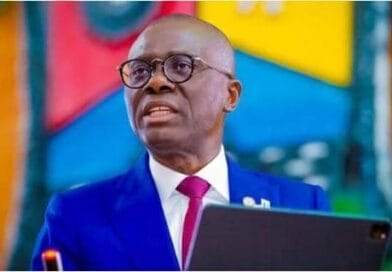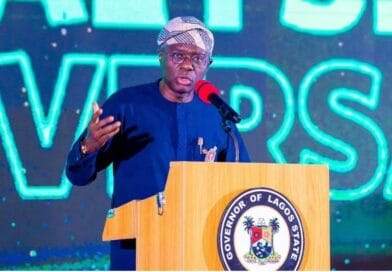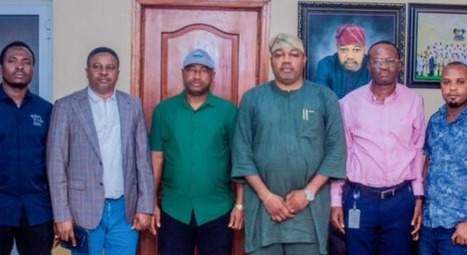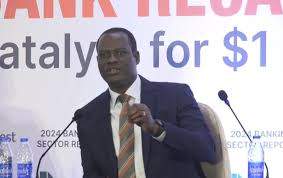My Scorecard- BOS
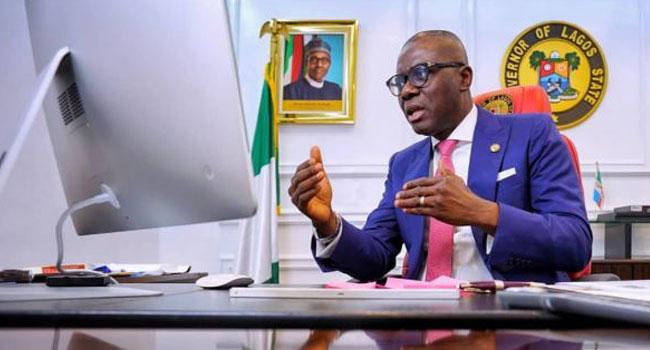
Babajide Olusola Sanwo-Olu, popularly known as BOS, is the governor of Lagos State. Since he got the nod of the ruling All Progressives Congress to run for another term in February 18, 2023 governorship elections, he has been defending the achievements of his administration.
Here are Frequently Asked Questions on his achievements:
How has the administration managed security in the last four years?
If you look at my THEMES agenda, the last word there which is ‘S’ is Security and good governance. Look at the security architecture in Lagos. I was opportune to be the first interim chairman of the Lagos State Security Trust Fund and I was part of the board for four years when we set up the fund in 2008.
So, what you see in Lagos outside of the regular Lagos State Police Command is that our government has been able to strengthen the Rapid Respond Squad (RRS). In fact, we have about 2,500 men that are in Rapid Respond Squad. We also have about 600 men in the Taskforce apart from the fact that we have access to about two to three MOPOL formations in Lagos. Lagos also has about 15 area commanders and about 110 divisional police officers. So what it means is that in that small space of 3,650 square kilometers, you have this whole entire garment of security architecture.
We have three layers of intervention in Lagos. The regular police in the event of a day-to-day issue that everybody wants to relate to but when you have a tactical intervention, the men of the RRS are usually the ones that you see coming out first. And when it has to do with direct intervention from the Governor’s office, then you can also see the men of the Taskforce. So, in the last three years, we have also been supporting all the security architecture in the state not only the Police. We have given them over 260 vehicles in the last three years. We have also extended similar support to the Nigerian Army, Nigerian Navy and Nigerian Air Force under a programme called OP MESA. So with all of that, they continue to speak to each other on a panel of state security and we continue to also support them on equipment because we know security is not cheap.
We have also extended this same support to other security agencies in Lagos State; NDLEA, Civil Defense Corps, Correctional Center, Nigerian Immigration Service and of course the Neighborhood Watch that we also have. So, it is the entire tripod that is now activated.
We recently agreed to collaborate and share information. And we are also taking it to the citizens. Our CDCs and CDAs have been working with us. They have over 1,100 of them in various associations and these are the people that we take intelligence from. The intelligence we take from them, the Lagos State Neighborhood Watch is the ones that we process in a way and manner that we can send to the Nigeria Police Force. So, that architecture is working for us.
Is it true that there are close circuit camera monitoring Lagosians?
We are working with the Department of State Security, which has a primary role for intelligence. They are the ones that comb the nooks and crannies. In terms of technology, you are aware that we are deploying our Smart camera. We are installing close to 2,000 CCTV cameras all around the city. We are turning some of them into traffic management. We are using some of them for traffic control but when there is a need, we also can review security activity. We are just building a new data centre for this kind of implementation and we are going to make this available to the Department of State Security so that they also can review some of this things and can also access it. It is a work in a pack and it is something that citizens need to be reassured of.
Is it true that you are upgrading the Command Centre?
I built that facility when I was the chairman of the Lagos State Security Trust Fund, so I know everything we put in there. We need to retool a few things, which we are currently doing. We have actually changed the orientation and the location of the place but beyond all of that in our ministry, we are building a new data room; a new data centre that would be specific for security. It is coming into the system already. We have got a shipment of about 21 containers that arrived about two months ago.
Will your administration extend the ban on commercial motorcyclists, also known as okada?
We have seen tremendous improvement in the areas in which okada has been banned.
We have seen about 550 okada-related accidents at the peak of it in January/February per month, but now, it has come down to less than 100, direct okada accidents that we have seen from our hospitals. There is also a reduction in robbery in traffic; it has significantly gone down.
How many residents of Lagos State have registered with the Lagos State Residents Registration Agency and what will residents who don’t register lose?
We just relaunched the LASRRA card, which is now the highest digital citizen’s card in this country. Out of the over 20 million people in the state, six million are registered in the database. We will enforce it to the extent that you might not be able to get some government services if you want to come to our hospitals, you want to come to our school.
Lagosians can’t wait to get on the Blue and the Red rail lines that your administration is pursuing. How safe will it be to travel on them?
Our journey to ensure that we have a rail infrastructure ready in Lagos State by December is on track; it is on budget and we will meet those deadlines.
Phase one of the blue line, which is what we finish will start from Mile 2 and terminate at Marina. Marina is the iconic station for the blue line. Phase Two of it will now push you back from Mile 2 and go all the way to Okokomaiko. The beauty of Phase Two is that it is at the grid, meaning it is at ground level. There is no overhead, it is not a building like the one in Marina that is like a bridge, so it is going to be faster and quicker for us and the corridor is there to lay the tracks and be able to finish it. For Phase One, we are going to start five stations from Mile 2 to Marina. We believe there is enough traffic on it.
For the Red line, it starts from Agbado, which is the outskirts of Lagos to Iju to Agege to Oshodi to Mushin to Yaba to Ebute Meta. It starts from Agbado all the way to Ebute Meta in the first instance. Phase Two of that incidentally, we want to do a lagoon crossing and get on to Marina at some time in the future. And outside of those two, we have four other lines that we are doing extensive visibility study on. We have committed huge resources. We need to do a viability and visibility study on them and they should be ready before the end of the year and we have seen both local and international investors who are ready because we have actually demonstrated this as a sub-national. We are the only sub-national anywhere in the world that is doing a rail by itself. People talk about Kenya and Ethiopia. Go and ask, it is sovereign that is doing the rail in Ethiopia; it is not the city of Addis Ababa.
The blue line will happen first by December, the red line would be in the first quarter of next year. But all of the infrastructures, hard infrastructure would be ready before the end of the year. The blue line infrastructure is almost ready. The blue line infrastructures are far slightly ahead of the red line. The difference is that the red line was conceived by our administration and we are really excited that we are completing it within our first tenure.
We will ensure that in each of our train stations, we have sufficient CCTV cameras and documentary of who has come in into the station and ensure that we also have scanners when people are going to board the train.
We are putting a payment system that is cashless. You are not going to come and pay by cash on the counter. You must have a prepaid card and the rest of it. So these are some of the things in our view that will deter would-be criminally minded people because they would not be passengers. That is one.
Secondly, the entire rail tracks are going to be fenced off. They are going to be walled off. We are building vehicular bridges in the stations and insulating people from possible attacks. We are even insulating vehicles; vehicles are not going to cross on the rail track. We have done bridges in Ikeja Along, Mushin, Yaba and even the difficult one, the old Apapa Road; we are doing a bridge there. So, vehicles will go on top, passengers will go on top and have the opportunity to do a complete wall off of the rail tracks.
If you go on the Blue line, Mile 2 to Orile to National Arts Theatre is being walled off completely. That is the kind of thing that is going to happen on the Red line. Once that is done and you have sufficient security monitoring; as people are coming into the stations and they are getting out, if anything happens, you can also go back and check it.
Have you fixed the Apapa gridlock now?
I have fixed the Apapa gridlock. We have received letters of appreciation from the residents. A journey of two to three hours is now 15 to 20 minutes.
We are doing the road from Sunrise in MTN from the Mile 2 end going towards Apapa and that is the portion that has not been completed. I think it is a stretch not more than a kilometer or something. So, that stretch needs to be completed for you to have a complete clean-up of it. However, you still have trailers on some of these roads and why so? You have trailers because the ETO system that NPA had set up, is actually working but there has been a lot of sabotage. That is number one.
Number two is also that they do not have enough trailer parks that can take the articulated trucks off the road. We are building one for them by Orile, for which we have signed a concession with someone. It is supposed to be able to relieve about 2,000 to 2,500 off the road. So, one of the things we said is that if you have an effective call-up system, what you should do is that if your truck has not been called, you don’t have any business coming into the Apapa area. That is the only thing that has not been fully implemented.
Also, inside of the terminals themselves, Apapa and Tincan Island ports, when they ask trailers to come, maybe about 200, they need to have enough space in their facilities to be able to take those 200 inside their facilities and not leave them on the road. Those are the conversations that we are trying to clean up with them. Once you give instruction and you said at 9 am, I want 200 containers trailers to move, you must ensure that you have enough facilities in your terminal to be able to take all the 200 of them off the road and put them in your facility so that once they take their containers or drop their containers they can leave. Those are the little clichés that we need to finalize with them but in terms of the real blockages where citizens, residents or businesses cannot access Apapa, we have done a good job.



